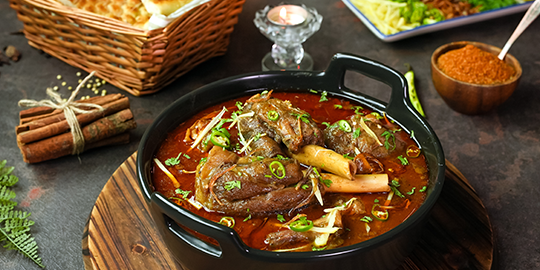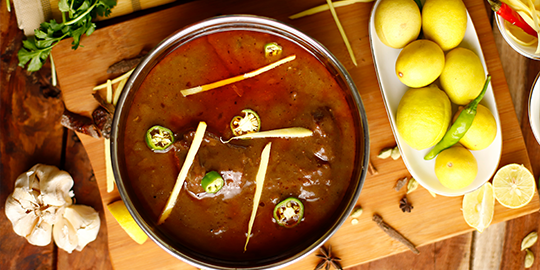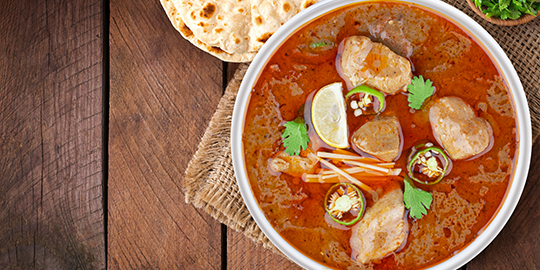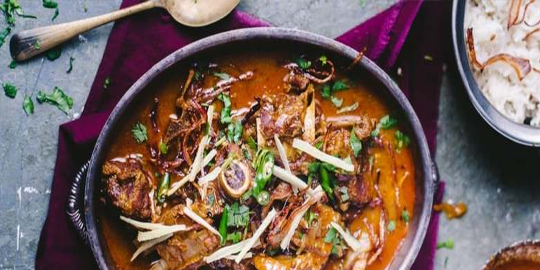History of Nihari: Where does it come from

Nihari is a slow-cooked stew made with beef or lamb, along with a variety of spices and herbs. It is typically served with naan or roti and can be garnished with fresh cilantro, lemon juice, and chilies. According to the history of Nihari, the delicacy has been around for centuries and is still a popular dish in Pakistan. It is often served as a breakfast dish but can also be enjoyed throughout the day. The rich flavor of Nihari is sure to please any palate, making it a must-have food in any Pakistani or Indian home.
Throughout the centuries, Nihari has evolved in different ways to accommodate different tastes and preferences. In some parts of Pakistan and India, it is made with goat instead of beef or lamb, while in other regions it is made with chicken. No matter the variation, Nihari has remained a beloved dish that continues to bring joy to families around the world. Despite all the love it gets, the history of Nihari still continues to be a mystery to many people and if you happen to be one of those people then settle down and get all comfy because we’re here to solve that mystery for you!
History of Nihari
Nihari is a winter specialty or one that is offered on special celebrations like the holy month of Ramadan and Eid-ul-Adha, even after being enjoyed throughout the year. Although some historians attribute the origins of this dish to Awadh (lying on the Indian side of the Subcontinent), during the Mughal era, the generally acknowledged location of origin is Delhi, during the final years of the Mughal Empire. The wonderful and varied cuisines that the Mughals had introduced to India from Persia were abundant in the Delhi Sultanate’s kitchens at the time.

In another recounting of events, the dish is believed to have originated in the 18th century during the Mughal Empire in what is now India and Pakistan. It is thought to have been invented by a chef named Haji Murad Ali, who served it in his restaurant in Old Delhi. Nihari is unique because it is typically a slow-cooked stew that is made with a variety of spices, herbs, and ingredients such as ginger, garlic, turmeric, cardamom, bay leaves, cumin seeds, coriander powder, and red chili powder. The result is an incredibly flavorful dish that has become popular throughout South Asia and beyond.

The Arabic term “Nahaar,” translating to the morning is where the dish gets its name “Nihari” from. To get more context, the dish has probably been named this way since Muslim noblemen at the time would eat this meal after morning prayers and then take a nap till it was time to get ready for the afternoon prayers, hence the connection to morning. Today, Nihari remains a popular dish in both India and Pakistan. It is often served as a breakfast dish but can also be enjoyed throughout the day. The rich flavor and aroma of the stew make it a favorite among many people.

Nihari is a complex dish that requires time and patience to prepare. The stew must be cooked slowly over a low flame, in order to bring out its unique flavor and aroma. It is often served with a variety of add-ons. In Pakistan, it is usually accompanied by naan, chapatis, or rice. In India, it is usually served with steamed basmati rice. It can also be accompanied by pickles, onions, chutneys, and other condiments. In some restaurants, it is also served with a side of kachumber salad.
Nihari has changed over the centuries, as each region has adapted the recipe to suit its own tastes and preferences. As a result, the dish has taken on different forms throughout India and Pakistan, but it still retains its traditional flavor.

No matter where it originated, and how complicated the history of Nihari might be, the fact remains that it has become an integral part of Indian and Pakistani cuisine. It is a hearty dish that is sure to please anyone who enjoys a good stew. You can now make the original Delhi-style traditional Nihari at your own home with the National Delhi Nihari Recipe Mix. Click here to order now!
